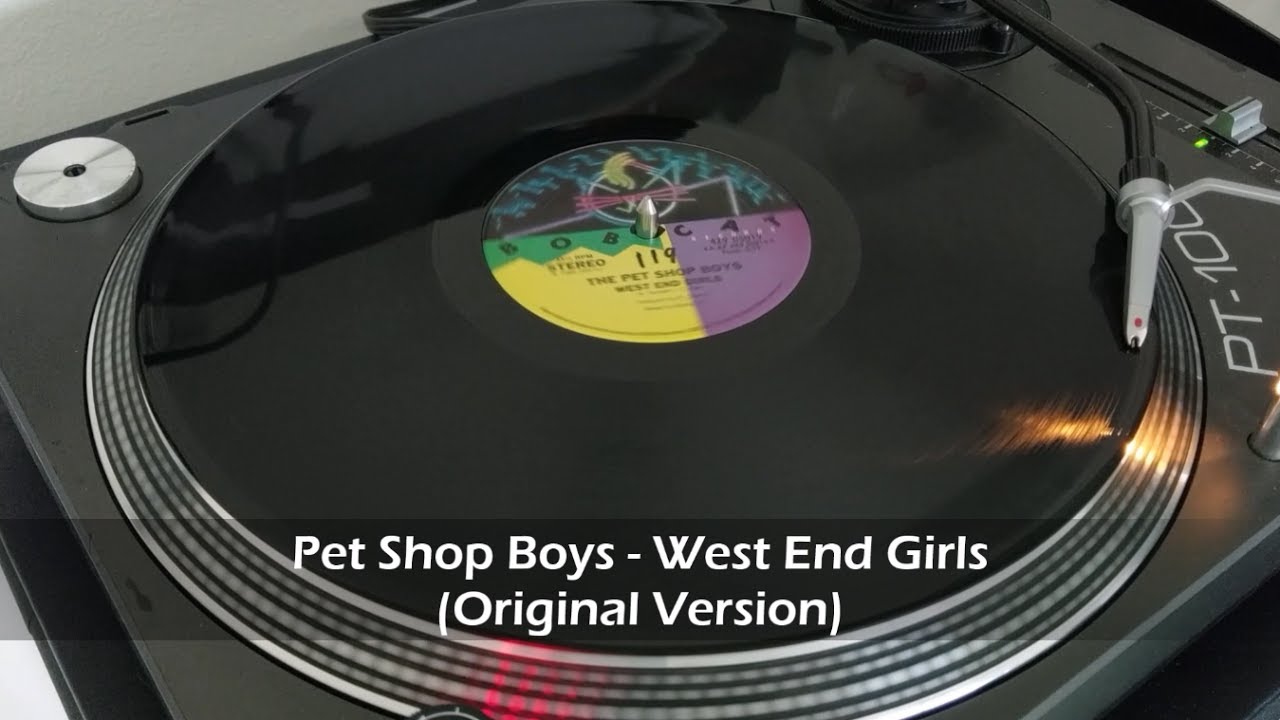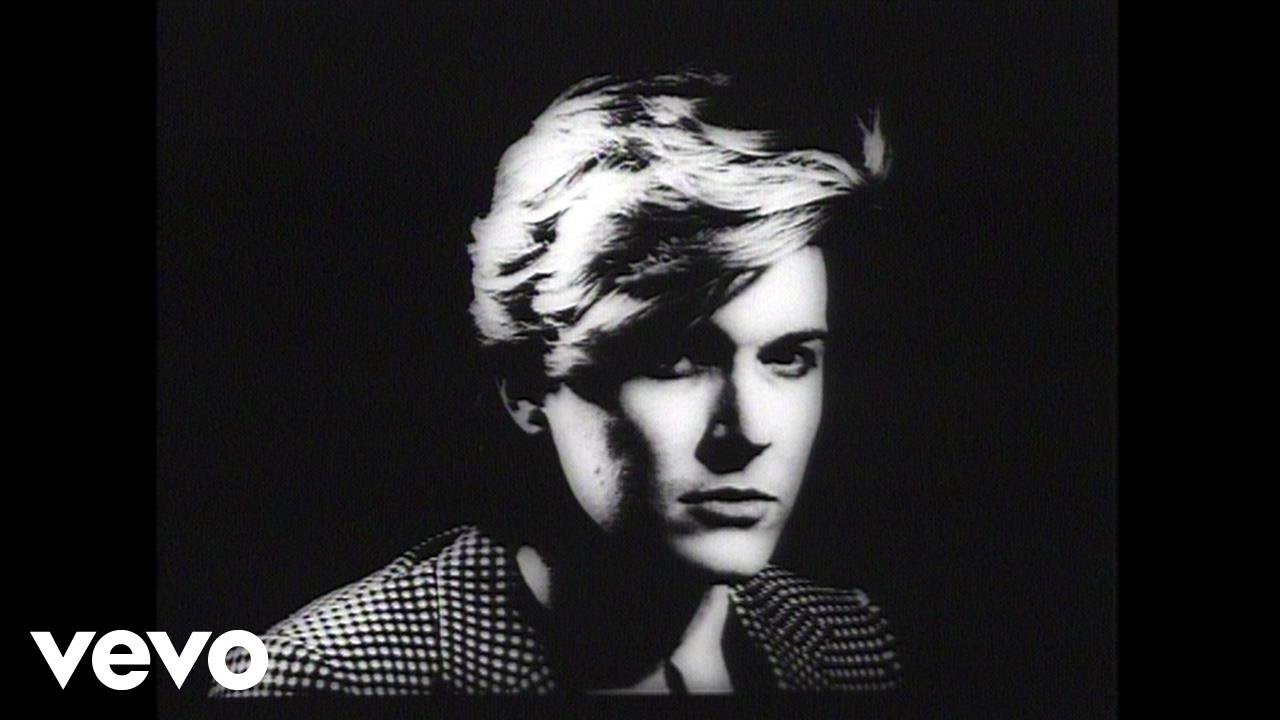Photo by Colm Henry
Reissued, reassessed, revived and occasionally reviled, interest in 80s music shows no sign of abating – for both those who were around at the time and those who wish they had been. In the last ten years or so there’s been a constant flow of revival tours and festivals; innumerable compilations of the known and unknown; a wave of new bands who sound like their 80s antecedents, using analogue synths or copycat plug-ins; new, niche magazines like Classic Pop; and of course the vinyl revival continues.
Much of the attention tends to focus on the early part of the decade, when post-punk and new pop was at its height, or the very end, as acid house and rave took over. Its mid-period is remembered by some as being a bit naff: Band/Live Aid, gated drums, the early hi-NRG hit factory sound of Stock Aitken Waterman, Absolute Beginners, Bowie’s Glass Spider tour, bland blue-eyed soul, soft rock, terrible fashion, worse haircuts. And it’s true, a large swathe of the mid-to-late 80s was probably guilty as charged. But as that captivating early period drew to a close, there was both a last gasp of pop genius and a year when everything was in flux.
1984 was British pop’s great divide: the passing of the baton from post-punk to indie; the end of synthpop and the re-introduction of guitars; the shift from analogue to digital; the last British invasion of the US charts; the beginning of the end of vinyl and the end of the beginning of CDs (although nowadays, incredibly, it seems to be increasingly the other way round); and with Band Aid, the start of popular music’s obsession with global causes. Arguably – literally – it was British pop’s most politicized year. There was plenty to respond to: record unemployment, the year-long miners’ strike, Thatcher generally; also the Troubles in Northern Ireland, Apartheid in South Africa and the threat of nuclear armageddon.
The Cold War was at its height, exacerbated by the fact that the Orwellian year of 1984 had finally arrived. Many people genuinely thought a Third World War was imminent or at the very least some nuclear plant would go into meltdown. Cue Nena’s ’99 Red Balloons’, Ultravox’s ‘Dancing With Tears In My Eyes’, Queen’s ’The Hammer To Fall’ and many others. Including, of course, Frankie Goes To Hollywood’s ‘Two Tribes’, the sonic attack of which bordered on the physical. It seemed perverse that an anti-war song could be so exhilarating. There may have been serious intent, but they were also scallywags, having a laugh. As was Ronald Reagan on 11 August when he jokingly announced in a radio soundcheck: ‘My fellow Americans, I’m pleased to tell you today that I’ve signed legislation that will outlaw Russia forever. We begin bombing in five minutes.’
So, national and global tension and a mysterious new virus (HIV). Is any of this sounding familiar? But amidst the mayhem there was some platinum pop and post-punk. So let’s take a journey from January to December, picking a song a month as we go. Songs which sum up the year, and how they represented a somehow pivotal moment between the end of one era and the beginning of another.
January
Frankie Goes To Hollywood’s ‘Relax’ may have been released in the autumn of ’83 on the new and wonderfully mischievous ZTT, but it took a BBC ban in January for it to become a hit. Yes, it was all about sex, but it also epitomised the way pop production was shaping up. In Trevor Horn’s hands, ‘Relax’ was gargantuan, a powerhouse of throbbing Fairlight and digital automation. No room for the band – the only member of the group to feature on the final version was singer Holly Johnson. From now on, the music world marched inexorably towards ones and zeroes.
February
There were many who opposed the new sheen, though. The Smiths released their debut album on the 20th, marking, in effect, the beginning of indie. Morrissey and Marr resisted new pop: pitting back-to-basics guitar-bass-drums against synthesizers and drum-machines, utilitarian clothes against designer suits, a proud miserablism against dumb optimism, looking back instead of forward. The muddily-produced album was an anti-climax, but Hatful of Hollow, later in the year, was refreshingly back to basics.
March
The Style Council’s debut album, Café Bleu, was so eclectic it seemed like a various artists compilation, reinforced by the title of its lead single ‘My Ever Changing Moods’. The album was released ten days after the miners’ strike began and Paul Weller was quick to lend his weight to benefit concerts, alongside Billy Bragg and many others. March also saw the release of The Special AKA’s ‘Free Nelson Mandela’ which went Top 10. It was a year full of politically-charged records which begs the question: where are today’s politicised troubadours?
April
April saw the first ever Pet Shop Boys release, the original Bobby Orlando-produced version of ‘West End Girls’. The next year would see it re-produced and a hit, but they were on their way, enabling Neil Tenant to leave his day job as Assistant Editor at Smash Hits for an illustrious career on the ‘giddy carousel of pop’.
May
Wham! came of age with ‘Wake Me Up Before You Go-Go’, their first UK #1, and also a #1 in the US. It was a perfect piece of pop. Really. Even arch aesthete Peter Saville who designed the sleeve couldn’t disguise his admiration for it.
June
Fed up with being a pop star, David Sylvian was going in the other direction. After Japan split at the end of 1982, he travelled and took stock. What followed was Brilliant Trees – a warm, hazy, languid, deeply personal album that was influenced by jazz, but didn’t necessarily sound like it. The lead single, ‘Red Guitar’, was about as pop as it got, although its video (directed by Anton Corbijn – one of his first) had art written all over it.
July
You couldn’t deny that jazz and pop were bedfellows in 1984: Carmel, Matt Bianco, EBTG, Working Week, Paul Murphy and Gilles Peterson spinning jazz standards in hipster clubs. And then of course there was Sade. A multi-million seller, it’s tempting to dismiss Diamond Life, released mid-month, as dinner party music for yuppies (a term arguably invented that year), but this does the band a disservice. Adu’s aloof singing style and image was informed by her character: she wasn’t interested in the trappings of pop stardom and hated doing interviews, and this would serve her well for the rest of her career: sophisticated and alluring but haughty and untouchable.
August
The Blue Nile had been around since the early 80s, but it took three years for their debut album, A Walk Across the Rooftops, to come out – a pattern their fans would have to get used to. The album was a perfect combination of Paul Buchanon’s fragile, aching, soaring vocals and the music’s seemingly contradictory minimal lushness – there is not a single wasted note on the album. Its indisputable highlight, though, is ‘Tinseltown in the Rain’, released as a single on the 20th. When Buchanon sings “I know now, love was so exciting” he sounds exactly like Frank Sinatra – and you could imagine him covering it. Astonishingly, it only made #87. Here they are performing it much later on… Later
September
U2 had begun the year at a crossroads. After three Steve Lillywhite-produced albums, they were up for a change. Bringing in Brian Eno would certainly take them out of their comfort zone, but it was risky. In the end, it wasn’t the seismic change that Eno brought to, say, Low or Remain in Light, but it was enough to lead them in a new direction. ‘Pride (in the Name of Love)’, released on the 3rd, was the ideal bridge between the old and the new U2: earnest, anthemic and self-righteous, but with an elegiac sonic backdrop that would be even more prevalent on the album, The Unforgettable Fire, released the following month.
October
As post-punk wore itself out, and The Smiths and Creation bands ushered in indie, groups like Cabaret Voltaire turned instead to a highly skewed dance music direction. The previous year had seen them move from Rough Trade to Some Bizarre (home to fellow travellers Soft Cell, The The, Foetus, Test Dept, etc) and release The Crackdown – an excellent, edgy slab of alt-electro. Single ‘Sensoria’, released early in the month, boded well for their next album, even if that album (Microphonies) didn’t quite deliver. Although no longer an ‘industrial’ band, the video is still quite typical of post-punk bands’ infatuation with Britain’s queasily photogenic industrial decline.
November
It’s tempting to be cool and choose The Jesus and Mary Chain’s wall-of-feedback debut single ‘Upside Down’ in which The Ramones met the Shangri-Las under half a ton of attitude, but I much prefer the equally intense, wall-of-reverb sound of Cocteau Twins’ Treasure released on All Saints Day. With those chiming proto-shoegaze guitars, Liz Fraser’s sublimely incomprehensible voice and 23 Envelope’s gorgeous sleeve, there’s no real comparison.
December
Rush-released on the 3rd, Band Aid’s ‘Do They Know It’s Christmas?’ was the fastest-selling single in UK chart history and stayed at number one for five weeks, raising £8 million to fight the famine in Ethiopia. This much we know. But here’s two things that are less talked about. Firstly, it’s actually a better song than a lot of people gave it credit for, and secondly it marked the beginning of the end of ‘new pop’s imperial phase’. Of the cast of stars who did their bit on the record, most then withered. Duran split into factions, Spandau blandified, Ultravox and Heaven 17 had had their day, infighting and media overexposure put the mockers on Culture Club, and Wham! split up in 1986, delayed for long enough to ensure Andrew Ridgely would never have to work again.
After 1984, pop became a bit bland. That’s a generalisation of course, but there was enough Stock Aitken Waterman, arena rock and blue-eyed soul to make one yearn for the edgy creativity of the early part of the decade. You could see it in broader street culture, too, which became more about expensive labels rather than the creative homespun clothes of punk and the second-hand dandyism of the new romantics. Indie wore casual, hip-hop sported sportswear, and, later on, acid house adopted baggy. There were no new pantomimed Adam Ants, kimonoed Boy Georges, ragamuffin Haysi Fantayzees or gypsied Kevin Rowlands. Of course there were exceptions – The Smiths, Pet Shop Boys, for example – but basically, British pop went into a kind of drift mode.
I’ll leave the last words to George Orwell from Nineteen Eighty-Four… “The tune had been haunting London for weeks past. It was one of countless similar songs published for the benefit of the proles by a sub-section of the Music Department. The words of these songs were composed without any human intervention whatever on an instrument known as a versificator. But the woman sang so tunefully as to turn the dreadful rubbish into an almost pleasant sound”. Sounds like 1985 actually.
1984: British Pop’s Dividing Year by David Elliott is published on 25 November by York House Books












